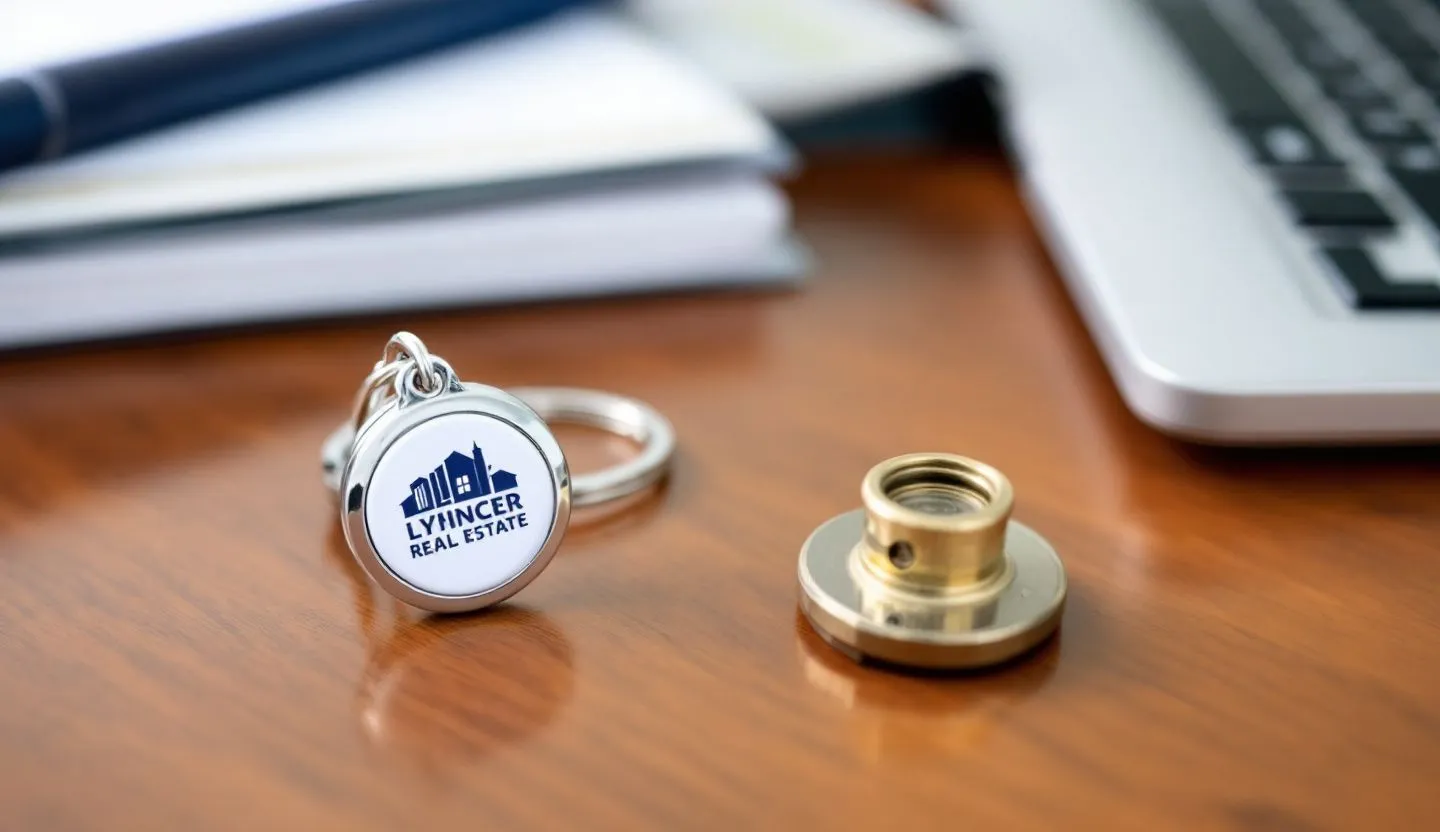We’ve all felt it, that quiet tension humming in the background of every enterprise marketing meeting. The push for speed is relentless, but so is the need for control. As brand leaders, we’re constantly navigating that razor-thin line between empowering our teams to move fast and ensuring every move protects what matters most. In 2025, that means our real estate assets. When I say “assets,” I don’t just mean the buildings, properties, or portfolios. I mean the brand equity, the market trust, and the operational backbone that keep our organizations running.
In my experience, even the best marketing and operations teams find themselves blindsided by new risks. Regulatory changes, cyber threats, supply chain shocks, and even the simple chaos of growth can all threaten the integrity and value of our real estate assets. And as we look ahead, the stakes are only getting higher. So, let’s get real about what’s changing, why it matters, and how we, as enterprise marketers and cross-functional leaders, can actually protect our real estate assets at scale in 2025.
The pain of protecting real estate assets at enterprise scale
If you’re leading marketing, brand, or operations at a high-growth enterprise, you know the pressure. You’re not just selling properties or managing leases. You’re safeguarding a complex ecosystem of physical, digital, and reputational assets, often across multiple geographies and regulatory environments. The risks aren’t theoretical. I’ve seen teams scramble when a local compliance update suddenly invalidates half their creative assets. Or when a cyber incident exposes sensitive tenant or partner data, sending ripples through legal, IT, and marketing in one fell swoop.
- Siloed teams and systems: Our marketing, legal, and IT teams often operate in parallel universes. When they don’t communicate, gaps appear. That could mean unapproved creative goes live, or critical compliance steps get skipped.
- Speed at the cost of safety: We’re all under pressure to deliver campaigns, launch initiatives, and execute at scale. But every shortcut we take, every unchecked asset or unsecured process, opens a door for risk.
- Brand dilution and inconsistency: When your real estate portfolio spans multiple cities, brands, or verticals, it’s easy for messaging and asset usage to drift. And every off-brand listing, every out-of-date image, chips away at the trust you’ve worked so hard to build.
- Evolving regulatory landscape: It’s not just about GDPR or CCPA anymore. Local, national, and even global regulations are in flux. Asset protection now requires constant vigilance and rapid adaptation.
I’ve felt the friction firsthand. That moment when a regional manager launches a new property campaign with outdated branding, or when a marketing asset goes live without legal review. It’s not just embarrassing; it’s expensive. Both in terms of fines and lost trust.
Why the landscape is shifting in 2025
If 2024 taught us anything, it’s that the pace of change isn’t slowing. The way we protect real estate assets in 2025 is fundamentally different from just a few years ago. Digital transformation, remote work, and new market entrants have all raised the bar. Let’s unpack a few of the big shifts that are rewriting the playbook for enterprise asset protection.
Regulatory frameworks are multiplying and intensifying
Remember when compliance meant a quick check with legal before launching a campaign? Those days are gone. Today, real estate asset protection means navigating a maze of local zoning laws, privacy requirements, and industry standards. In 2025, ESG (Environmental, Social, and Governance) reporting is now table stakes for enterprise portfolios. Cities like New York, London, and Singapore are rolling out new disclosure mandates for property data and sustainability performance. If you’re not ahead of these requirements, you’re already behind.
Cyber risk is now an everyday threat
The pandemic fast-tracked our reliance on digital platforms, cloud-based property management, and virtual transactions. That’s unlocked incredible speed and scale. But it’s also created new vulnerabilities. Ransomware attacks targeting real estate data, phishing scams aimed at your teams, and even IoT-enabled building breaches are now regular headlines. And as we automate more processes,from digital leasing to AI-driven marketing,our attack surface grows.
The brand experience is everywhere, all the time
In 2025, every touchpoint matters. Prospective tenants, investors, and partners expect seamless, trustworthy interactions, whether they’re walking into a property or clicking through a branded asset library. Fragmented asset management, inconsistent branding, or outdated listings don’t just cause confusion,they erode the very trust that drives enterprise growth.
Hybrid work is driving new asset management complexity
As organizations embrace hybrid work, the way we think about real estate has changed. Properties are no longer just static investments. They’re dynamic hubs that support flexible teams, digital collaboration, and ever-shifting business models. Protecting these assets now means managing everything from secure Wi-Fi in flexible workspaces to ensuring that every remote listing complies with local brand and legal standards.
How to protect real estate assets with an enterprise lens
So, what does real estate asset protection really mean in 2025? It’s not just about locks and legal contracts anymore. For enterprise organizations, it’s about integrating people, processes, and platforms to build a proactive, resilient strategy. Let’s break down what that looks like in practice.
Centralize asset management for total visibility
One of the biggest risks I see is fragmentation. When marketing, legal, operations, and IT all use different tools or processes, no one has the full picture. That’s how mistakes slip through. In my last role, we moved to a single, enterprise-grade digital asset management (DAM) system. Suddenly, every property image, contract, and creative asset was in one place. We could set permissions, track usage, and ensure only up-to-date, compliant materials made it into the wild.
The payoff was huge. Not only did we slash the time spent searching for assets, but we also caught compliance issues before they became problems. And with version control, we could roll back changes or prove exactly when an asset was approved and by whom. For any marketing leader who’s ever fielded a late-night call from legal about an unauthorized image, you know how much peace of mind that brings.
Build compliance into every process
You can’t bolt compliance on at the end anymore. It has to be baked into every workflow. We integrated automated compliance checks directly into our asset management and creative review processes. That meant every new property listing, marketing campaign, or partnership collateral had to pass through legal and regulatory review before going live. It wasn’t about slowing down. In fact, it sped us up by eliminating last-minute fire drills.
We also set up regular cross-functional reviews with compliance, IT, and marketing teams. These weren’t box-checking exercises. We used them to spot new risks, update guidelines, and share learnings from across the organization. The result? Fewer surprises, more alignment, and a much stronger compliance culture.
Prioritize cybersecurity at every touchpoint
Enterprise real estate portfolios are prime targets for cybercriminals. From tenant data to proprietary designs, our digital assets are as valuable as our physical ones. We partnered closely with our IT and security teams to implement multi-factor authentication, regular security training, and real-time monitoring for all our property management and marketing platforms.
But we didn’t stop at technology. We ran tabletop exercises with marketing, operations, and legal to simulate cyber incidents. That helped us build muscle memory, so when a real phishing attempt hit our inboxes, we responded quickly and effectively. Cyber risk isn’t just an IT problem anymore. It’s everyone’s responsibility.
Empower teams without sacrificing control
Speed and scale are non-negotiable in enterprise marketing. But so is control. We struck a balance by creating branded templates and pre-approved asset libraries for our local teams. That way, they could move fast,launching campaigns, updating listings, or responding to market shifts,without risking brand inconsistency or compliance violations.
We also invested in training and clear guidelines. Every new team member, whether in marketing, operations, or IT, completed onboarding modules focused on asset protection, compliance, and brand standards. The message was clear: protecting our real estate assets is part of everyone’s job.
The next-gen DAM for enterprise
Get more than just storage. Get the DAM that dramatically improves content velocity and brand compliance.Real-world examples of enterprise asset protection in action
Theory is great, but nothing beats real-world proof. Let’s look at how some enterprise organizations are getting it right,and where others have stumbled.
A global REIT centralizes digital assets for compliance
One of our peers, a global real estate investment trust (REIT), faced a nightmare scenario in 2023. After a local marketing team published an outdated property brochure, the company was hit with a regulatory fine and negative press. The root cause? Siloed asset storage and inconsistent review processes.
In response, the REIT invested in an enterprise-wide DAM and embedded legal review into every creative workflow. Now, all teams access the same up-to-date assets, and every campaign is logged and auditable. The result: zero compliance incidents in the past year, and a marked boost in brand trust with investors.
A proptech disruptor thwarts a cyber breach
A fast-growing proptech company learned the hard way how vulnerable digital real estate assets can be. After a ransomware attack targeted their cloud-based property management platform, sensitive tenant data was at risk. The company responded by partnering with IT to implement end-to-end encryption, regular penetration testing, and mandatory security training for all employees.
Marketing teams now collaborate closely with security to vet new tools and platforms before adoption. The payoff? No successful breaches since, and a reputation for being a trusted, secure partner in a crowded market.
A multifamily operator streamlines brand compliance
For a national multifamily operator with dozens of brands and hundreds of properties, maintaining brand consistency was a constant battle. Local teams often created their own materials, leading to off-brand listings and mixed messages.
The solution was to roll out a centralized brand portal, complete with pre-approved templates, logos, and messaging. Local teams gained speed and autonomy, but every asset was automatically checked for compliance before going live. The operator saw a sharp decline in brand incidents, and marketing efficiency soared.
The intersection of technology, people, and process
Protecting real estate assets at scale isn’t just a technology play. It’s about orchestrating people, processes, and platforms in harmony. Here’s how I’ve seen enterprise teams make it work.
Technology as an enabler, not a bottleneck
The right tools matter, but they’re not a silver bullet. We chose platforms that integrated seamlessly with our existing tech stack,CRM, property management, legal, and creative tools. That meant less toggling, fewer dropped balls, and real-time visibility across the asset lifecycle.
Automation played a huge role, too. Routine tasks like version control, compliance checks, and access management were automated, freeing up our teams to focus on strategic work. But we never lost sight of the human element. Every tool was chosen with user experience in mind, making adoption a breeze.
People as the first and last line of defense
No system is foolproof if your people aren’t engaged. We invested in regular training, not just once but as an ongoing commitment. From phishing simulations to brand workshops, our teams knew what to look for,and how to respond.
We also created clear escalation paths. If someone spotted a risk or compliance issue, they knew exactly who to contact and how to resolve it. That culture of accountability made all the difference.
Process as the glue that holds it all together
Our processes weren’t static checklists. They evolved as the landscape changed. We held quarterly reviews with cross-functional teams to update protocols, share new threats, and celebrate wins. And we documented everything,not to create bureaucracy, but to ensure consistency and scalability as we grew.
The result was a living, breathing approach to real estate asset protection. One that adapted to new challenges, leveraged the best of our people and technology, and kept our brand strong.
Navigating compliance, brand, and risk with confidence
Enterprise marketing and asset leaders are uniquely positioned to drive change. We’re the connective tissue between brand, compliance, IT, and operations. Here’s how I’ve seen our peers step up in 2025.
Proactive compliance is a growth driver
Gone are the days when compliance was just about avoiding fines. Today, proactive compliance is a competitive differentiator. When your partners, tenants, and investors know you take asset protection seriously, you build trust. That trust opens doors to new markets, partnerships, and growth opportunities.
We worked hand-in-hand with legal and compliance to get ahead of regulatory changes. That meant not just reacting to new laws, but anticipating them. When we expanded into new geographies, we partnered with local experts to ensure every asset, campaign, and partnership met the highest standards.
Brand control at scale builds resilience
Brand consistency isn’t just a marketing concern. It’s a strategic asset. In 2025, every touchpoint,from a property tour to a digital ad,reinforces or erodes your brand. We created scalable systems for brand governance, so every team, in every market, operated from the same playbook.
That didn’t mean stifling creativity. We empowered local teams to adapt messaging for their markets, but within clear guardrails. The result was a brand that felt both global and local,and resilient in the face of change.
Risk management as a shared responsibility
Protecting real estate assets is everyone’s job. We embedded risk management into our culture, making it part of every onboarding, campaign, and quarterly review. That shared responsibility paid off. When a risk surfaced,a phishing email, a compliance question, a brand concern,our teams acted fast, together.
We celebrated those moments, too. Every time someone spotted and reported a potential risk, we recognized their contribution. That positive reinforcement built a culture of vigilance and pride.
Building a future-proof asset protection strategy
The world isn’t getting simpler. If anything, enterprise real estate is more complex, competitive, and regulated than ever. But that’s not a reason to retreat. It’s an opportunity to lead.
Invest in scalable, integrated platforms
The best asset protection strategies start with visibility. That means investing in platforms that bring together marketing, legal, IT, and operations. Look for solutions that offer:
- Centralized asset management: Everything in one place, with robust permissions and audit trails.
- Automated compliance checks: Built-in workflows that catch issues early and keep you ahead of regulatory changes.
- Cybersecurity integration: Tools that protect both digital and physical assets, with real-time monitoring and response.
- User-friendly design: Platforms your teams actually want to use, with training and support built in.
Foster a culture of collaboration and accountability
Technology alone isn’t enough. The most successful organizations build a culture where everyone feels responsible for asset protection. That starts at the top, with leadership setting the tone, but it lives in the day-to-day actions of every team member.
- Regular cross-functional meetings: Break down silos and share insights across departments.
- Clear roles and escalation paths: Make it easy for anyone to flag and address risks.
- Continuous learning: Keep teams up to date on new threats, regulations, and best practices.
The only constant is change. In 2025, the organizations that thrive are those that adapt quickly. That means reviewing and updating asset protection strategies regularly, staying plugged into regulatory shifts, and learning from both successes and setbacks.
We built quarterly reviews into our operating rhythm, using them to spot trends, share lessons, and recalibrate as needed. That agility kept us ahead of the curve,and gave us the confidence to move fast without sacrificing control.
Enterprise leaders face a new reality when it comes to how to protect real estate assets in 2025. The stakes are higher, the risks more complex, and the margin for error is razor thin. But this challenge is also an opportunity for those willing to rethink old playbooks and embrace a holistic, proactive approach. By centralizing asset management, building compliance into every workflow, prioritizing cybersecurity, and empowering teams with both autonomy and guardrails, we turn asset protection into a true competitive advantage.
At the heart of every successful strategy is a culture of shared responsibility, continuous learning, and cross-functional collaboration. As marketers, brand leaders, compliance officers, and operations executives, we are stewards of both tangible and intangible assets. The organizations that thrive in this new landscape will be those that invest in scalable, integrated platforms, foster a culture of vigilance and accountability, and stay agile in the face of relentless change. Protecting real estate assets is no longer a siloed function,it’s a core driver of enterprise growth and resilience. The future belongs to those who lead with clarity, confidence, and a commitment to doing things right, every time.




